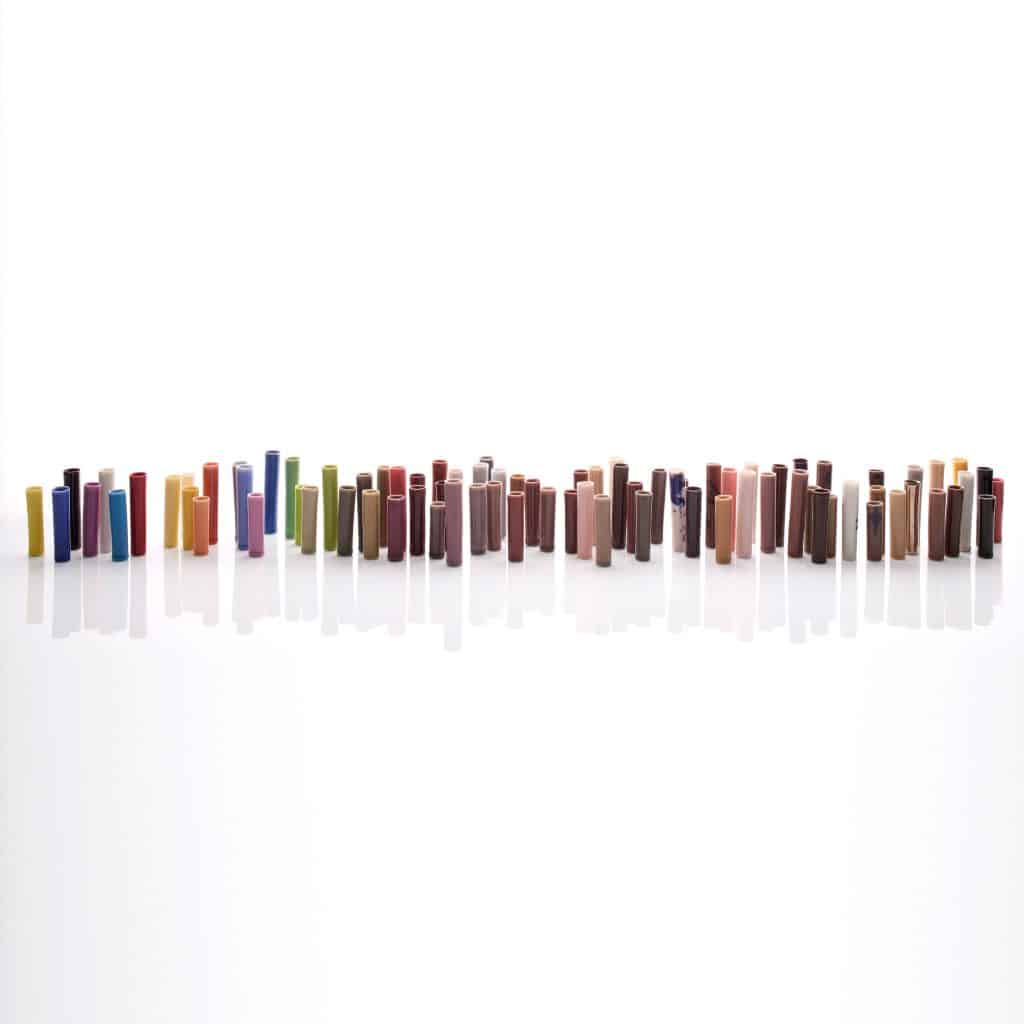More about Skin Deep (Of Human Colour), 2013
'My porcelain installation is a response to a wax Head of an Indian from 1870. The head was part of a display in Vienna where European visitors would pay a few pennies and gawp at indigenous people from around the globe. My chromatic study places perception under the microscope by putting it into the mixing bowl.
Eurocentric views of the nineteenth century are thankfully buried. As a European looking at the Indian chief now, I am not marvelling at our differences, but at what connects us. The wax head is strange and unnerving, with real teeth and hair, intelligent gaze and sensitive mouth. I want to get under both our skins and find our common ground - our common coloured ground.
Getting radical (radix: root) I find my way to the Indian chief through the roots of colour, especially the trinity of blue, red and yellow. Like a cartographer mapping land, I map the cyan, magenta, yellow, red, black and white between us. There are curious linguistic connections between clay and people that make pots an apt vessel.
Humans have feet of clay and pots, like us, have feet, bellies, shoulders and lips. Porcelain is muscular, sensitive and oddly visceral in clay form, and bone or teeth-like once fired. Glazes are waxy, transparent, matt and shiny like skin, and fluid like bodily liquids. Ceramic is one of the most transformative materials humans have.
Skin Deep is one big colour test. Skin pigment has three main colourants - carotene (yellow and orange), haemoglobin (red and blue) and melanin (brown, purplish-brown, purple). As an equivalent I substituted colour models used in paper printing like CYMK (cyan, yellow, magenta and black) and RGB (red, green and blue) for my glazes. The pots on the far left show my six foundational glaze colours. Moving slightly to the right, I begin to mix these colours two at a time, for example, red + yellow for orange, or blue + yellow for green.
Then I start mixing multiple base colours together such as magenta, yellow, black and cyan, in an attempt to reach human skin colour. I achieve strange off-colours like dirty purples and muddy greens.
Then the mixing becomes more subtle as I pay more attention to amounts, understanding that more or less yellow makes a world of difference to the glaze and that red and cobalt carbonate are vital. Now when I open the kiln I am travelling the globe and see friends from Ecuador, Ethiopia, Colombia, Japan, Korea, China, Spain, Italy, England, Ireland, Denmark, Greece, India and Sri Lanka. I add pots with tattoos in admiration of the way we can embellish our skins with systems of belief.
The difference between the Indian chief and me is a gentle smattering of blue, red and yellow.
(Porcelain, variously coloured longquan glaze, matt glaze, crackle glaze, potash feldspar, cobalt underglaze prints, iridescent and platinum lustres)'
- Natasha Daintry


